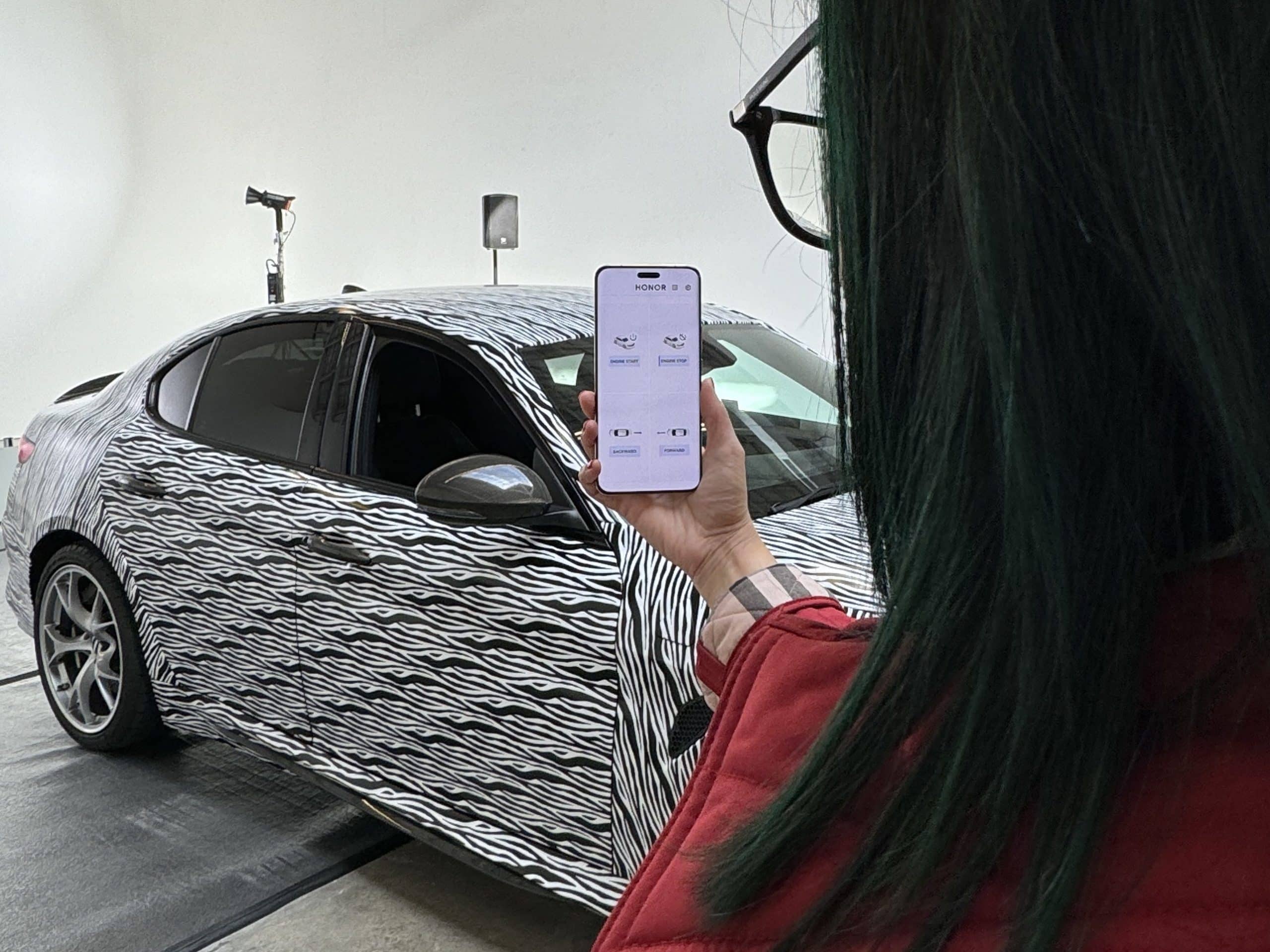FORBES AFRICA had a unique opportunity to check this out and more at MWC Barcelona.
From robotic dogs to dancing humanoids and baristas on-demand, you didn’t know where to look at mobile technology trade show, Mobile World Congress (MWC) Barcelona, being held at the Fira de Barcelona Gran Via in Spain, from February 26-29. And yet, one of the most futuristic experiences at the event had to be driving a car using one’s eyes – or rather, using Honor’s AI eye-tracking feature.
The Magic 6 Pro smartphone that supports this feature made its global debut in Barcelona but was introduced to the Chinese market in January. The AI eye-tracking feature works using the notifications screen, if you look at it long enough.
This writer tested it on an unmarked, wrapped vehicle parked at a warehouse in the Spanish city. The app used to control the car required a quick calibration before the car could be ‘driven’.
It supports four basic commands: engine start, engine stop, backward and forward.
The AI eye-tracking registers what you’re looking at for at least 1.8 seconds and, once the status bar fills up, it takes another 1.8 seconds to take effect. At times, one has to look at the button for longer than the 1.8 seconds but, for the most part, it worked.
Honor’s AI eye-tracking car feature was purely demonstrative, and is nowhere near going live; neither is Honor speaking to car manufacturers about it. But it does pose questions on both privacy, and accessibility for the hearing impaired.
Xiaomi shows off its electric car
The Xiaomi stand in Hall 3 at MWC drew some of the biggest crowds as its first electric car, the SU7, made its global debut outside of China.
A Porsche Taycan EV rival, the Xiaomi SU7 is part of the company’s ‘Human x Car x Home’ ecosystem that runs on its HyperOS platform.
The single-motor SU7 model is equipped with a 73.6kWh battery developed by Xiaomi and promises up to 668km of range, according to China’s Light-Duty Vehicle Test Cycle (CLTC). It goes from 0-100km/h in 5.28 seconds, and has a top speed of 210km/h.
The dual-motor SU7 Max has a larger 101kWh battery with up to 800km of range (CLTC), with a top speed of a 265km/h. It goes from 0-100km/h in 2.78 seconds, beating out the Taycan Turbo S’ 2.8 second acceleration.
Pricing and international availability is to be confirmed.
Lenovo’s ‘world-first’ transparent laptop
Straight out of a science fiction movie at MWC was Lenovo’s futuristic transparent laptop.
The ThinkBook Transparent Concept features a 17.3-inch Micro-LED see-through display that is borderless with a transparent keyboard that appears to have a floating footpad design.
As you open applications and the screen fills up with images, the less transparent it becomes.
Lenovo explains that the laptop blends the virtual and real worlds using AI-generated content to unlock new ways to work. The keyboard also doubles up as a drawing board with a supported pen.
Motorola demos a rollable wrist phone
Motorola has shown off yet another rollable phone concept at MWC, but completely different to last year’s Rizr, which rolled open from a 5-inch to a 6.5-inch display.
This year’s Rollable Concept Phone can wrap around your wrist thanks to its flexible back fabric and magnetic design.
While no official specs have been shared, it can be rolled and propped upright or sit on a magnetic strap worn on the wrist, as demonstrated at their stand.
The display adjusts according to screen orientation, and the wallpaper can adjust to match your clothes once you snap a photo of them. It will offer an array of options that make it a matching wrist accessory.
